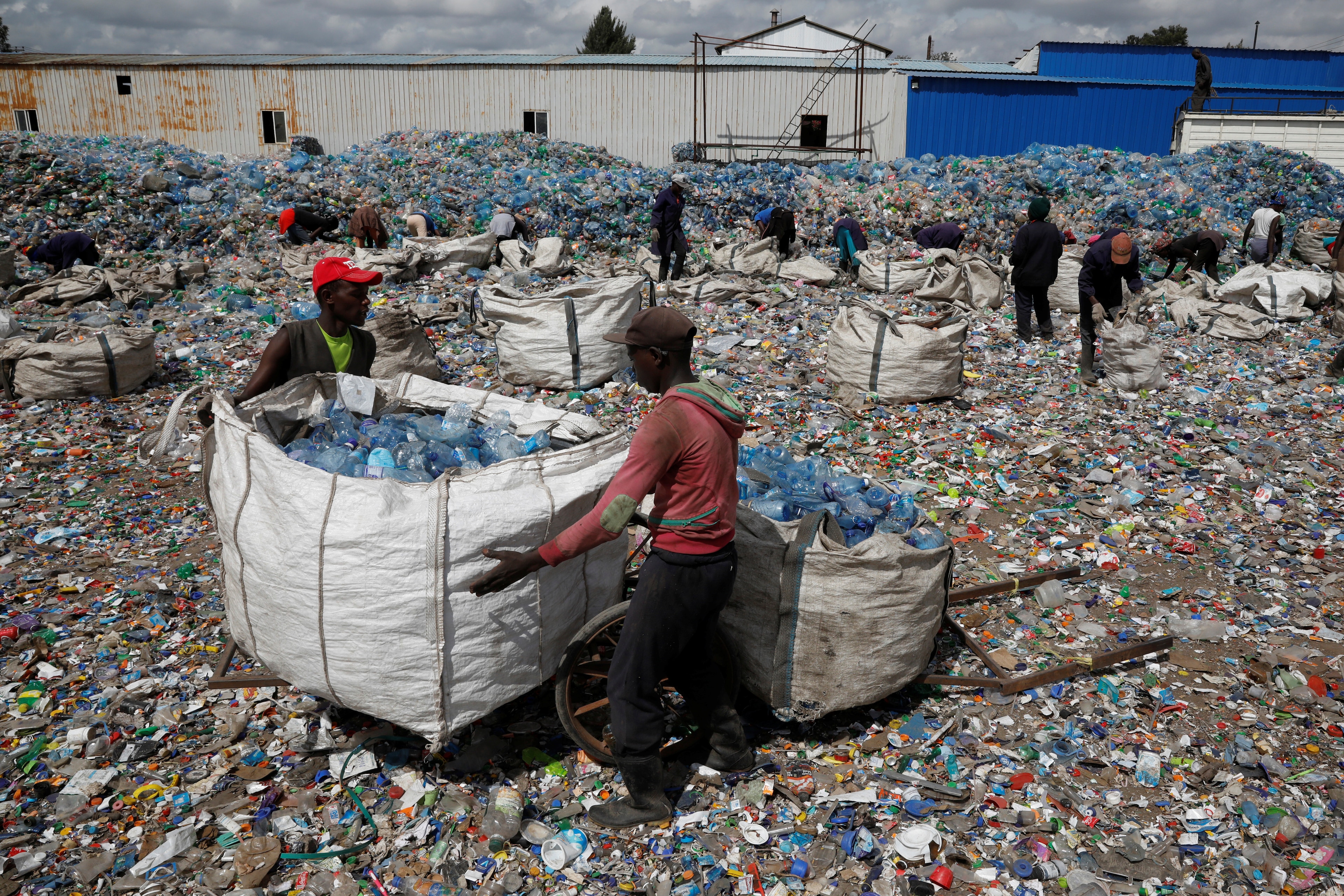Not all coral reefs mind warm water
Some coral reefs are more used to water temperature changes than others.
Image: REUTERS/HO/Great Barrier Reef National Park Authority
Stay up to date:
Innovation
“I think that’s what most people probably think, that you would see more bleaching in places where it’s warmer year-round, and that was one of my assumptions as well,” says Deron Burkepile, an associate professor in the University of California, Santa Barbara, ecology, evolution, and marine biology department and coauthor of the study in Nature Communications. “That’s what made this result surprising.”
Many corals host a symbiotic algae whose photosynthesis provides the animal with extra energy. However, when the coral is under stress, it often expels this colorful algae, revealing its white skeleton underneath in a process known as bleaching.
For the new study, Burkepile and colleagues tapped into data from the Reef Check Foundation, a global citizen science project that study coauthor Gregor Hodgson began in 1996.
The researchers combined field observations of coral bleaching at 3,351 sites across 81 countries from 1998 through 2017 and found it was less severe in the low tropics (close to the equator) and in regions with naturally high surface temperature variability.
Range of temperatures
The authors suspect that, for corals that live most of the year in consistently warm water, a little extra heat is not a big deal. On the other hand, corals used to high levels of variability may cope better with warming events as well, given they are used to a range of temperatures.
“Think of someone from New York, where it gets really cold in the winter but it’s also really hot in the summer. They have different wardrobes—coats, boots hats, shorts, sandals—and they can adapt to the changing weather,” says postdoctoral researcher Mary Donovan, one of the study’s coauthors. “Compare this to someone who lives in the Caribbean and only has shorts; if it got cold they’d be out of luck.”
What’s more, corals seem able to withstand higher temperatures before bleaching now than in the past. Scientists are still trying to understand why, but it could have to do with evidence of adaptation or previous removal of weaker species or individuals.
Trouble ahead
“But coral reefs are not out of the woods,” Burkepile says. “They are under extreme threat in the near-term—the next few decades to century—from climate change.” As carbon emissions continue to rise, we’re likely to continue to see the same trend in increasing frequency and intensity of coral bleaching, he notes.
“We are uncertain why equatorial reefs are more tolerant of recent temperature stress, but we do know that we must protect these equatorial reefs—and reefs everywhere—from other disturbances,” says coauthor Rob van Woesik, director of the Institute for Global Ecology at Florida Tech.
Researchers haven’t seen the bleaching trend across the globe. The new study points out places where less bleaching than expected occurs.
“That’s going to be really important for thinking about conservation,” Burkepile says. “Our work will help identify the places in the world where maybe we can put extra effort into conserving some of the bright spots in the world’s coral reefs.”
Other threats
The models scientists currently use to predict bleaching events are pretty accurate, but they work on large scales. Scientists didn’t design them to predict the extent of bleaching on the level of individual reefs or islands.
“And that’s really the scale we have to start thinking about if we’re going to facilitate reefs either becoming more resistant to bleaching or helping reefs recover after these bleaching events happen,” Burkepile says. The models the team developed for the paper fill in the gap at these smaller scales.
However, rising ocean temperature is only one puzzle piece in the picture of coral in the 21st century and beyond, researchers say. Pollution, fishing, ocean acidification, and many other activities also threaten coral reefs.
Stressed out
The team plans to follow up on sites that fared better and worse than average to learn what factors made them more or less resilient against bleaching than scientists would otherwise have predicted. They suspect that reefs that had more severe bleaching events faced many of these other stressors in addition to high temperatures.
“It’s just like working a couple of 70-, 80-hour weeks,” says Burkepile. “You’re exhausted. Then you come across somebody with the flu and your defenses are down, and then you get sick. If these corals are stressed out all the time by these local sources of stress, then they may be more susceptible to even a little bit of thermal stress and bleach quicker than expected.”
Citizen scientist data made the research possible, Donovan says. “I think it’s a special part of this work,” says Donovan. “Individuals from all over the globe participated in collecting the data.”
Coral faces an uncertain future, but humans haven’t written the obituary for coral reefs yet, Burkpile says.
“My kids, who’ll start diving maybe 10 or 15 years from now, will see completely different coral reefs on the island of Moorea than I’m working on right now. It doesn’t mean they won’t be coral reefs, but they’ll be different.”
Don't miss any update on this topic
Create a free account and access your personalized content collection with our latest publications and analyses.
License and Republishing
World Economic Forum articles may be republished in accordance with the Creative Commons Attribution-NonCommercial-NoDerivatives 4.0 International Public License, and in accordance with our Terms of Use.
The views expressed in this article are those of the author alone and not the World Economic Forum.
Forum Stories newsletter
Bringing you weekly curated insights and analysis on the global issues that matter.
More on Nature and BiodiversitySee all
Tom Crowfoot
July 30, 2025
Oliver Kade, Sarah Hadley and Judith Ketelslegers
July 28, 2025
Nasim Pour, Sebastien Cross and Joel Gould
July 28, 2025
Elena Raevskikh and Giovanna Di Mauro
July 23, 2025
Arunabha Ghosh and Jane Nelson
July 22, 2025






